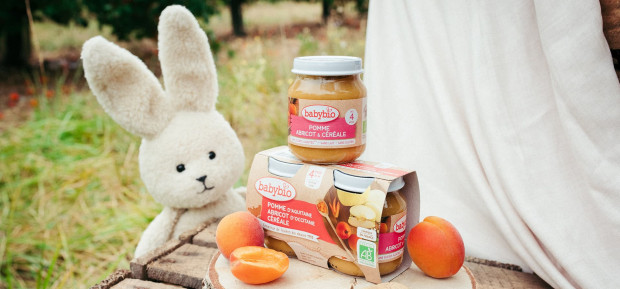Food diversification in 5 steps
At a time of diversification, you have many questions about which foods to introduce as a priority. Here are some recommendations to help you find your way around.
1- Infant milk, always infant milk
Infant or breast milk is the basis of your baby's diet. At 4 months, it needs up to 500 ml / day at least up to 3 years. In addition to this base, you will introduce solid foods one by one, from the start of diversification.
2- Forward for fruits and vegetables
The first solid foods given to your baby are vegetables. Choose them soft and not fibrous first: carrots, green beans, zucchini, spinach, leek white… taking care to remove the skin or the fibrous parts. At lunch, your baby can eat them cooked preferably in steam
without adding salt, and reduced to a very smooth puree. You will introduce small pieces gradually from around 10 months, depending on the arrival of the teeth and baby's tastes. Little by little, all the vegetables can be introduced.
About 2 weeks after the introduction of the vegetables, make way for the fruit! We introduce them in second because your little one might prefer the fruits because of their sweet flavor and sulk the vegetables. Continue the vegetables at noon and introduce the fruit to taste. All fruits are allowed, as long as they are fully ripe, cooked and finely mixed at the start, without adding sugar: apple, pear, banana, quince, apricot, peach, plum; according to the seasons!
3- Starchy foods to “wedge” baby
From 6 months, infant cereals can be mixed with infant milk or vegetable soup in small quantities. For "little eaters", they are very useful because they provide energy in a small volume.
As for bread and cereal products (small pasta, semolina, rice), they will be introduced from 6 months because of their gluten content.
4- Meat / fish / eggs without waiting for iron
Any type of meat is authorized, except cold meats (with the exception of ham), as well as any type of fish. Eggs (yolk and white) are also part of your baby's diet and should be eaten hard. Introduce them in mixed form from 6 months.
The amount consumed gradually increases, as your child grows. One element of the meat / fish / egg group per day is sufficient.
From 6 months, it is possible to give about 10 g of meat or fish per day (2 teaspoons) or ¼ of hard-boiled egg, then 20 g (4 tsp) at 8 months or 1 / 3 hard-boiled eggs and 30 g (6 tsp) or ½ egg at 12 months.
5- Dairy products for her little bones
From 6 months, always in addition to breast or infant milk, you can introduce dairy products (preferably infant): yogurt, cottage cheese or even a little cheese, while keeping a minimum quantity of 500ml of infant milk per day.
There is a good chance that your little one will enjoy the small dishes that you have prepared with love. If he is reluctant, be patient and listen to his tastes and appetite!
Sources :
- Fewtrell, M. Bronsky, J. Campoy, C. « et col. » Complementary Feeding: A Position Paper by the European Society for Paediatric Gastroenterology, Hepatology, and Nutrition (ESPGHAN) Committee on Nutrition. Journal of Pediatric Gastroenterology and Nutrition, 2017
- OMS, Principes directeurs pour l’alimentation complémentaire de l’enfant allaité au sein, 2003
- Patrick Tounian, Françoise Sarrio, Alimentation de l’enfant de 0 à 3 ans, Edition Elsevier Masson 2011
- PNNS, Repères d’introduction des aliments chez l’enfant de 0 à 3 ans
- Mpedia, Découverte de nouvelles saveurs de 4 à 6 mois, 2017 : http://www.mpedia.fr/142-diversification-alimentaire-mois.html


